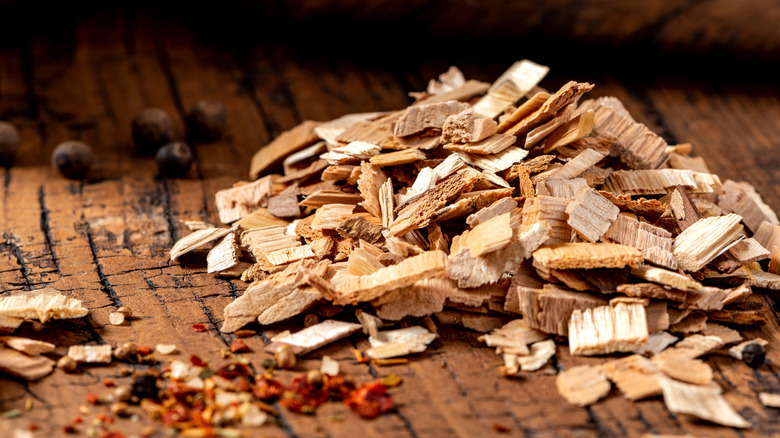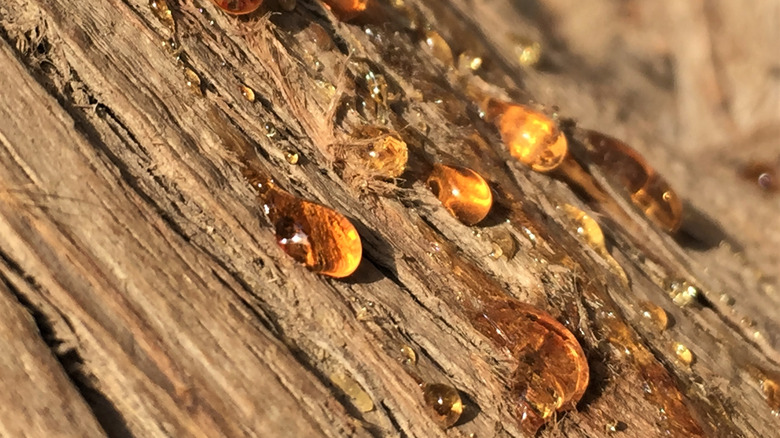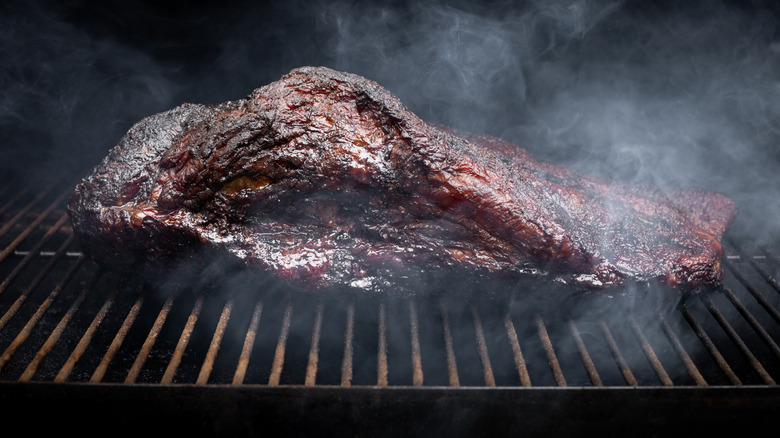How To Pick The Right Type Of Wood For Smoking Meat
The lingering smell of smoked meat from the barbecue takes us back to the very beginning of cooking with fire. Smoked food has an added dimension that Edward Lee, author of the cookbook "Smoke & Pickles", calls "the sixth sense", via House Rock Kitchen. Even if you don't eat meat, the smoked Texas BBQ brisket will almost certainly make you drool. Marcia Pelchat, a sensory researcher at the Monell Chemical Senses Center, believes that might be because our limbic brain stores ancient memories of meat cooked over a fire. While that's a plausible theory, it doesn't fully explain the intimate chemistry between wood chips and meat — and it's a very interesting one.
It appears that wood choice is key to the hard-to-resist flavor of smoked meats. For example, hickory is often used for some of our favorite meats, including bacon and country ham, but there are plenty more options for us to explore. If you really want to up your barbecue skills, it's essential to learn about different types of wood used for smoking.
Not all wood is suitable for smoking
Not all burning wood produces desirable results for smoked meat. It all starts with the little molecules that make up the wood. Most of the wood consists of cellulose and hemicellulose (or simply sugar) molecules, which are responsible for the sweet, caramel-like notes of the smoke. But there's a more interesting molecule called lignin, and its complex structure is what creates the dominant aromas of each wood, as well as hundreds of additional flavor particles that end up on the meat when it's smoked.
Hardwoods, particularly nut and fruit trees, essentially have many more of these molecules and are therefore considered better for smoking than softwoods. The evergreen softwoods such as pine, cypress, and redwood also contain sap, which can add a very unpleasant aroma when smoking meat. It's worth noting that the lignin molecules are highly dependent on where the tree was grown, and that's why some BBQ shops keep the origin of their wood a secret — seems that nice smoke is worth traveling for.
Choosing the best wood for smoking meat
It's best to approach smoking meat as you would spices. If you're new to smoking, the best idea would be to start with all-around woods like oak, hickory, beach, or pecan and build up from there. They work well for pretty much any type of meat, from light poultry and fish to denser meats like beef or venison. Always start with less, as the smoke can easily become overpowering especially if you're smoking a delicate fish.
All-around woods can easily be combined with more pronounced aromatics; so for poultry or pork, you can add fruit and nut woods such as cherries, apples, or maple — it will produce a beautiful sweet smoke that complements the lighter meats exceptionally well. If you want something more intense, strong woods like mahogany, mesquite, or walnut are a tasty addition to beef and game. Again, mix only small amounts of the strong wood with oak or hickory, and you're guaranteed to get the best results.


